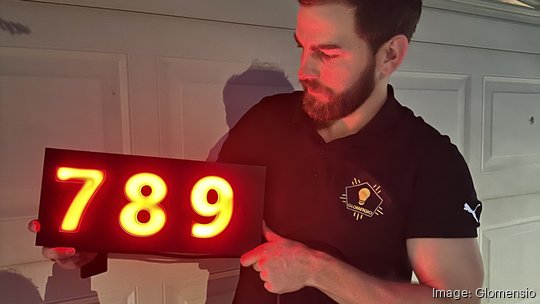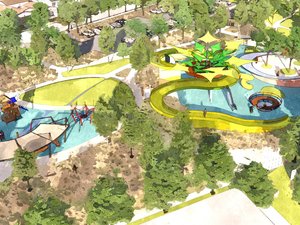
A group of four Arizona State University alumni are working on a smart home device that can detect a 911 call and trigger exterior house numbers to flash red and blue to ensure emergency services personnel can find the house easily.
Gauve Batta, founder, CEO and chief vision officer of tech startup Glomensio LLC, designed and built a first-generation product that features light-up house numbers. Since finishing this product last year, it has been installed in eight states and two countries.
"Since then, we have been working on our second-generation product that is able to detect when you or anyone from your family call 911, and the product flashes red and blue after that to ensure EMS personnel can find the house easily," said Batta, a mechanical engineer.
Batta and his team are launching a Kickstarter campaign to help finance the work on the product.
"The hardware is currently in the works," he said. "There will be an app for setting this up. Thereafter, we will be adding all the features that enable the device to connect to other smart devices, such as fire alarms and wearables, to automatically detect emergencies."
Andrew Timler, president and COO of Glomensio, is a U.S. Air Force veteran who has served as a first responder as well as an ICU and emergency room nurse.
He knows first-hand how difficult it can be to find a house in the dark. When he was in the Air Force, he was on the security force team, responding to security threats on the base. He remembers driving through the military base, shining flashlights on houses, trying to find an address.
Coming up with the idea for Glomensio
Batta and Timler met as roommates at ASU and became fast friends.
They started the Scottsdale company in May 2021. Also on the team are Hemanth Veeragandham, vice president of engineering, who previously worked at Ford and Lockheed Martin Corp.; and Hargundeep Singh, vice president of supply chain, who worked at NeoRig, HEB, Cintas and Sensia before joining Glomensio.
"We came up with this idea not only to find the house easier but when you call 911 experiencing distress, the address numbers start flashing red and blue and it gets people help even seconds sooner," said Timler, who had been an ICU nurse since 2016. "The medical community knows seconds save lives for brain death."
They named their product Firefly as an inspiration from nature.
"This needs to be something as universal as a fire alarm," Batta said. "It needs to be modular. The numbers fit like Legos. You take a number and push it right in. People have the ability to upgrade the numbers by themselves. It takes no more than 15 minutes to install."
The team wants the Kickstarter campaign to raise $50,000 to manufacture the second generation Firefly so it can be produced in mass numbers. Currently the numbers are being printed on a 3D printer, and that takes four hours for each number, Batta said.
Early bird pricing starting at $199 includes the first generation product that doesn't flash red and blue. The second generation product will be sent as soon as it's manufactured and fully tested, Batta said.
After the Kickstarter campaign, the retail price will jump to $299 for the second-generation device.
Batta said he's hoping to launch the campaign within a week.











